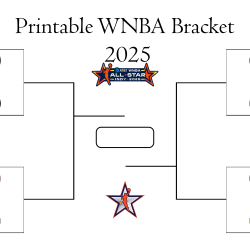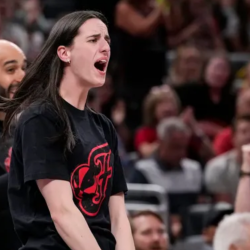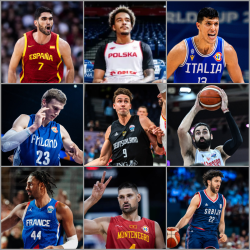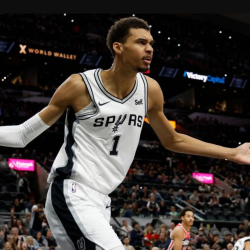FIBA World Cup History
Since 1950, the FIBA World Cup of Basketball is an international basketball tournament that takes place every four years between nations from all around the globe.

Previously known as the World Championships of Basketball (WBC) for the first 60 years, the tournament was recently renamed in 2014 to leverage the brand and excitement associated with the more popular FIFA World Cup, the Futbol equivalent that is a global phenomenon. FIBA isn’t quite a household association quite yet, but with the growth of basketball around the world, it makes sense to go with the World Cup naming convention.
World Cup History: Champions
| Year | Host | Gold | Silver | Bronze | Forum |
|---|---|---|---|---|---|
| 1950 | Argentina | Argentina | USA | Chile | N/A |
| 1954 | Brazil | USA | Brazil | Philippines | N/A |
| 1959 | Chile | Brazil | USA | Chile | N/A |
| 1963 | Brazil | Brazil | Yugoslavia | USSR | N/A |
| 1967 | Uruguay | USSR | Yugoslavia | Brazil | N/A |
| 1970 | Yugoslavia | Yugoslavia | Brazil | USSR | N/A |
| 1974 | Puerto Rico | USSR | Yugoslavia | USA | N/A |
| 1978 | Philippines | Yugoslavia | USSR | Brazil | N/A |
| 1982 | Colombia | USSR | USA | Yugoslavia | N/A |
| 1986 | Spain | USA | USSR | Yugoslavia | N/A |
| 1990 | Argentina | Yugoslavia | USSR | USA | N/A |
| 1994 | Canada | USA | Russia | Croatia | N/A |
| 1998 | Greece | Yugoslavia | Russia | USA | N/A |
| 2002 | USA | Yugoslavia | Argentina | Germany | N/A |
| 2006 | Japan | Spain | Greece | USA | Go |
| 2010 | Turkey | USA | Turkey | Lithuania | Go |
| 2014 | Spain | Go |
FIBA World Cup Selection
The World Cup features 24 teams handing out berths to regional champions, wild cards, the host country, and the previous Olympic champion. The spots are not doled out equally among the regions, but presumably more slots are given to regions that are more competitive. 19 of the 24 slots are determined this through “local” championships:
| Region | Berths | Tournament |
|---|---|---|
| Africa | 3 | Afrobasket |
| Americas | 5 | FIBA Americas Championship |
| Asia | 3 | FIBA Asia Championships |
| Europe | 6 | Eurobasket |
| Oceania | 2 | FIBA Oceania Championship |

In the above calculation includes the previous Olympic champion. That berth is subtracted from the region’s count. The remaining five slots are given to the chosen host country and four wild cards chosen by FIBA.
| reason | berth(s) |
|---|---|
| Host Country | 1 |
| Wild Cards | 4 |
Usually, FIBA chooses Wild Cards based on their FIBA rankings, but they’ve chosen other nations based on the sport’s popularity in the past.
Choosing the FIBA World Cup Groups
When the 24 teams have been determined, FIBA then places them into six “pots” of four teams each. Pots are used to help create some form of equity when selecting the groups. Specifically, in the 2014 draw, “Pot 1” had the top four nations in the FIBA World Rankings to ensure none of the those four teams ended up in the same group. The remaining five pots were placed based on geographical and sporting criteria.
With the top teams in one pot, certain restrictions will be implemented depending on the year. For example, 2014 had a few restrictions — one that specified that the two powerhouse teams, the United States and Spain, were to be placed on either side of the bracket so that the only way they would meet would be in the championship game.
Another 2014 restriction disallowed the two Oceania representatives Australia and New Zealand to be in the same group. Presumably so that the region had the best opportunity to be represented in later rounds.
After all that, each of the four teams in the six pots will be assigned to one of the four different groups: A, B, C, or D.
When the tournament comes around, the six teams play other five teams in their group. At the end of the round robin, the top four teams from each group move onto the quarterfinals.










